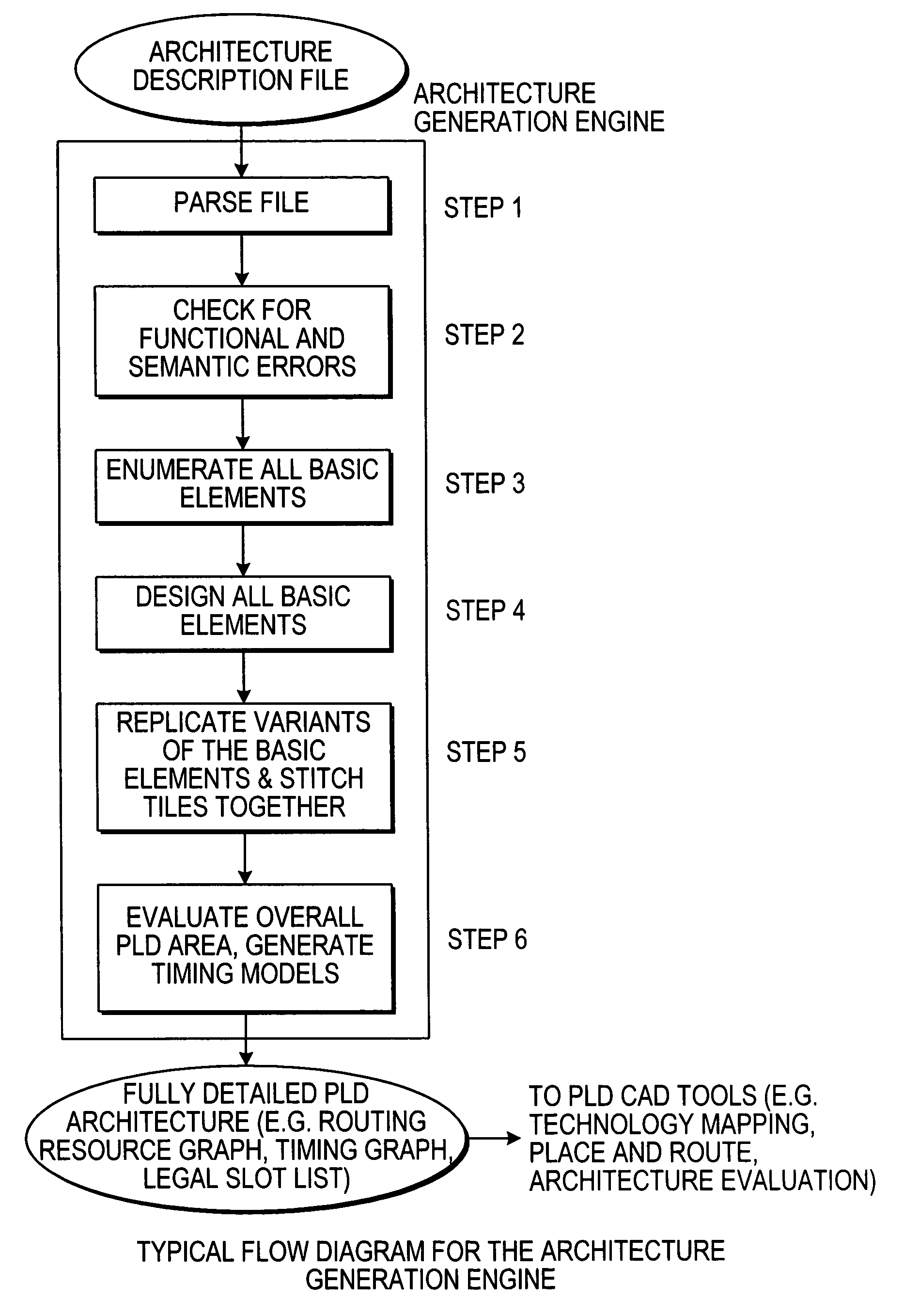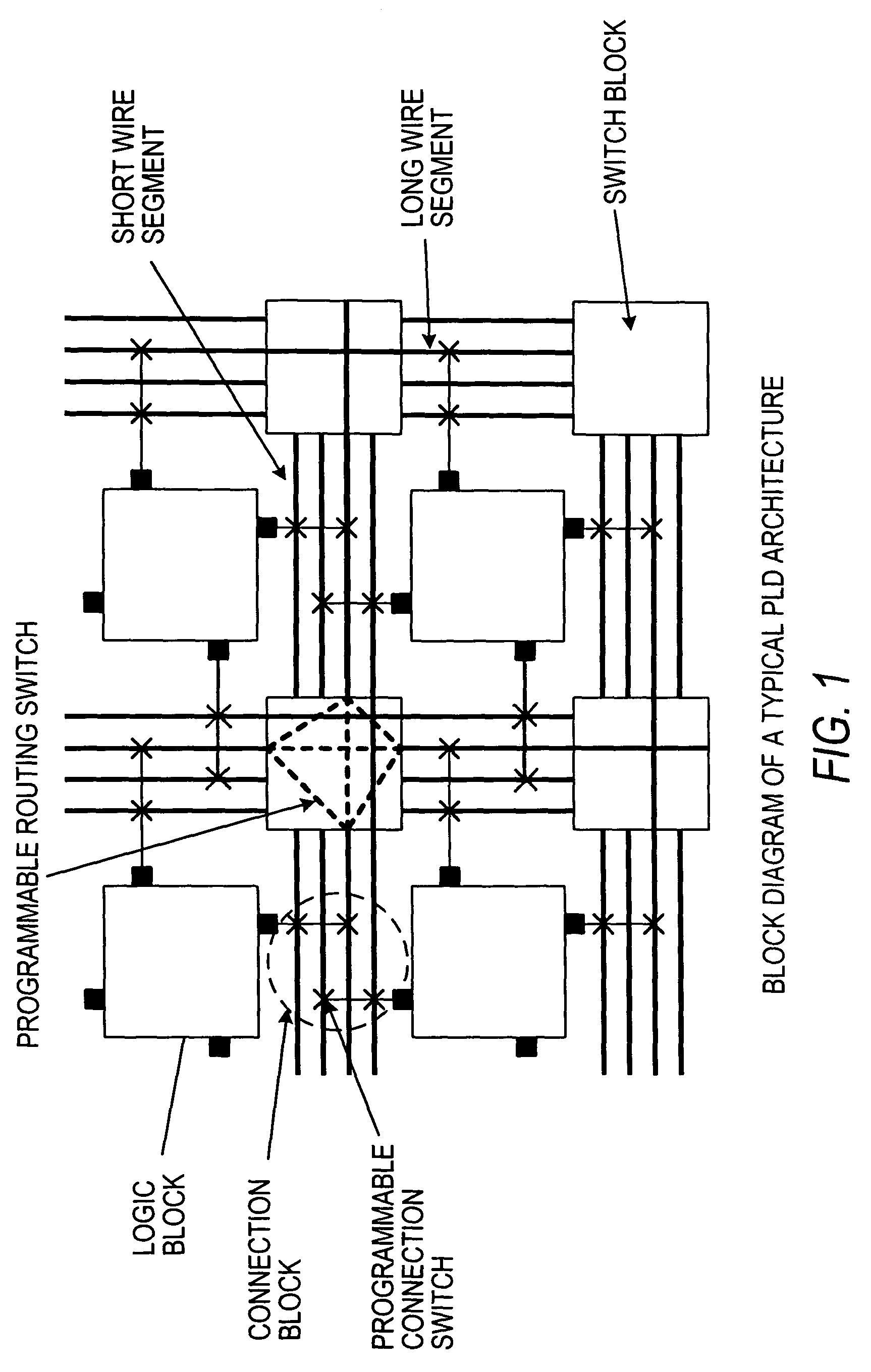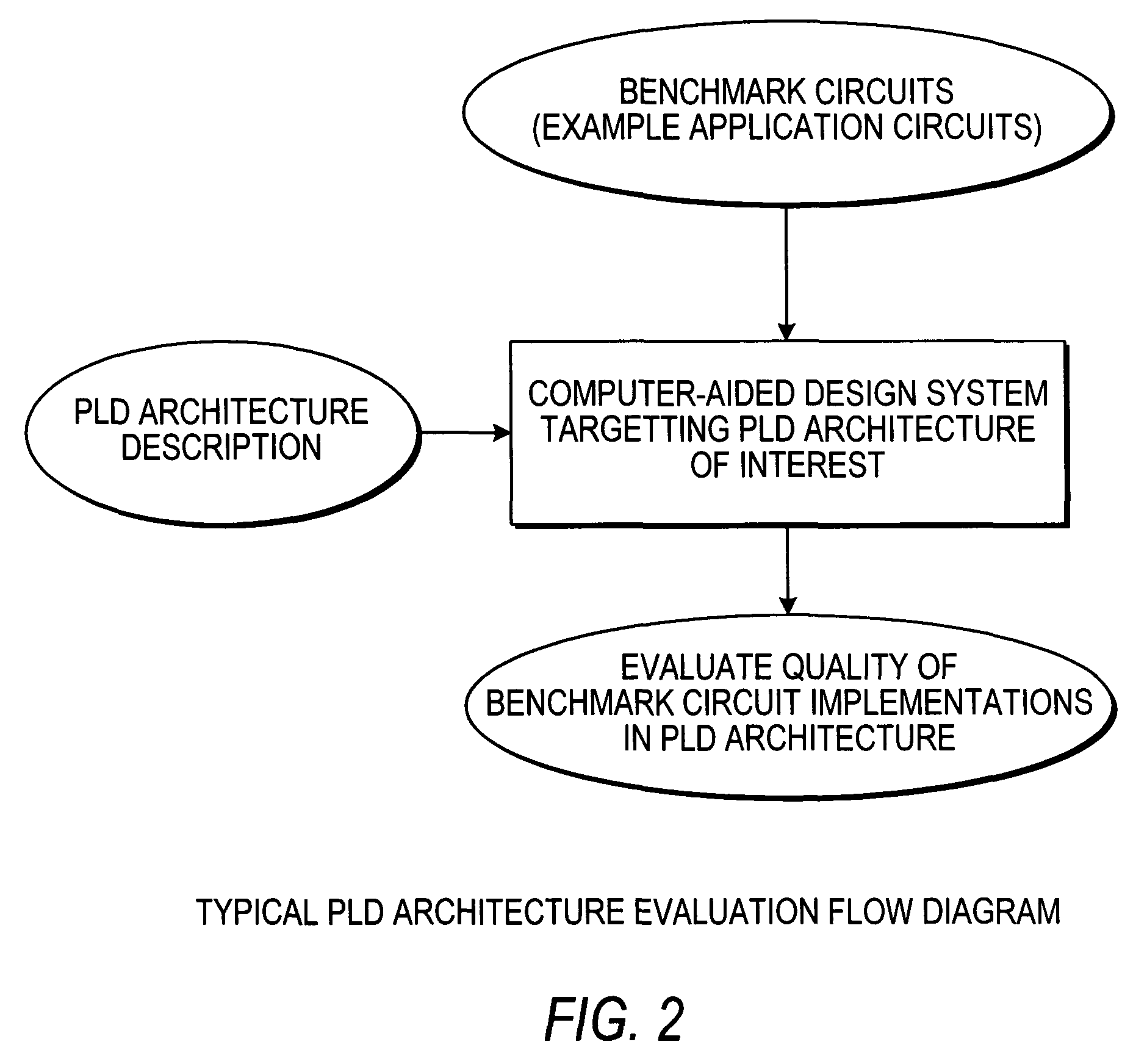Automatic generation of programmable logic device architectures
- Summary
- Abstract
- Description
- Claims
- Application Information
AI Technical Summary
Benefits of technology
Problems solved by technology
Method used
Image
Examples
Embodiment Construction
[0040]The architecture generation engine of the invention converts a preferably concise high-level description of a PLD architecture into a fully detailed is description required by CAD tools to implement circuits in a PLD and to estimate the performance of the architecture. A preferred implementation of how to represent a PLD architecture concisely, and to automatically generate the fully detailed representation of the architecture is described below. Many variations of this preferred implementation are possible, however, including using only a subset of the parameters listed below to describe a PLD or using a different set of parameters.
[0041]With a high-level PLD architecture description language, the PLD designer describes the architecture using:[0042]The various “types” of wire used in the PLD, including the wire length (number of logic blocks spanned), and the wire resistance and capacitance, or other delay metric;[0043]The various “types” of programmable routing switch used i...
PUM
 Login to View More
Login to View More Abstract
Description
Claims
Application Information
 Login to View More
Login to View More - R&D
- Intellectual Property
- Life Sciences
- Materials
- Tech Scout
- Unparalleled Data Quality
- Higher Quality Content
- 60% Fewer Hallucinations
Browse by: Latest US Patents, China's latest patents, Technical Efficacy Thesaurus, Application Domain, Technology Topic, Popular Technical Reports.
© 2025 PatSnap. All rights reserved.Legal|Privacy policy|Modern Slavery Act Transparency Statement|Sitemap|About US| Contact US: help@patsnap.com



